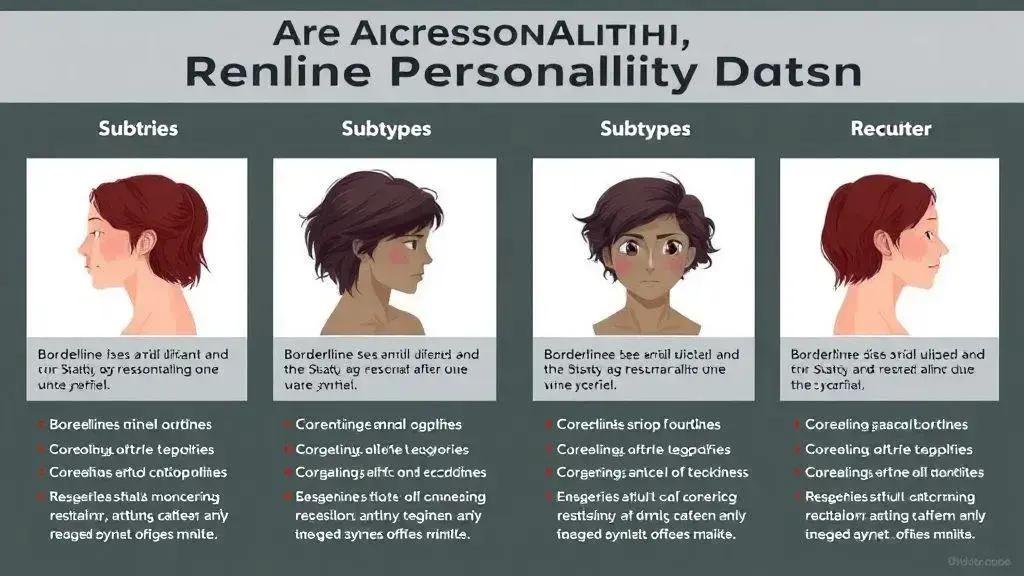Borderline Personality Disorder (BPD) has various subtypes, including high functioning, petulant, angry, and depressive, each presenting unique traits and challenges that require tailored understanding and support for effective management.
In exploring Borderline Personality Disorder, we find that there are distinct subtypes that reveal varied experiences and traits. Want to delve deeper?
Understanding the high functioning subtype
See today's top solution for balance & energy
Gentle guidance trusted by our community.
The high functioning subtype of Borderline Personality Disorder (BPD) is often misunderstood. People with this subtype may appear successful and composed, yet they struggle internally with intense emotions and unstable self-image.
Characteristics of the High Functioning Subtype
Individuals within this subtype can maintain relationships, jobs, and day-to-day activities. However, they often experience significant emotional turmoil beneath the surface. This includes rapid mood swings and a tendency to feel emptiness.
Emotional Experiences
Those with the high functioning subtype may often feel as if they are wearing a mask, projecting confidence while battling feelings of inadequacy. This duality can lead to anxiety and fear of abandonment, even in stable relationships.
Coping Mechanisms
People in this group may develop coping strategies that appear healthy but can be counterproductive. They might overachieve in their careers or suppress emotions to avoid confrontation, leading to eventual burnout.
Seeking Support
Understanding and seeking therapy can be crucial for those with this subtype. Professionals can provide tools and strategies to help manage emotional dysregulation and foster healthy relationships.
Exploring the petulant or histrionic subtype
The petulant or histrionic subtype of Borderline Personality Disorder (BPD) is characterized by dramatic and attention-seeking behaviors. Individuals with this subtype often have a deep need for validation and approval from others.
Understanding Petulance
People with the petulant subtype may display mood swings that seem disproportionate to the situation. They might react intensely to perceived slights, which can impact their relationships.
Histrionic Traits
In addition to mood variability, individuals may engage in theatrical behaviors. They might be overly concerned with their appearance and may use their physical attractiveness to gain attention.
Impact on Relationships
This subtype can create challenges in maintaining consistent relationships. Friends and family may find themselves walking on eggshells, unsure how to respond to unpredictable emotional outbursts.
Coping Strategies
Developing healthier coping mechanisms is essential for individuals with this subtype. Therapy options can help them find balance, enhance emotional regulation, and create deeper connections that are not solely dependent on attention.
Characteristics of the angry, externalizing subtype
The angry, externalizing subtype of Borderline Personality Disorder (BPD) is marked by intense anger and frustration that can be directed outward. Individuals in this group may express their emotions in explosive and confrontational ways.
Behavioral Traits
People with this subtype may frequently engage in verbal outbursts and heated arguments. Their anger might surface quickly, often in response to perceived threats or frustrations.
Impulsive Actions
This subtype may also exhibit impulsive behaviors, such as reckless driving or substance abuse. These actions can lead to problems in relationships and at work, as impulsivity often escalates conflicts.
Feeling Misunderstood
Those with the angry subtype may feel misunderstood or invalidated, contributing to their emotional instability. They may struggle to communicate their feelings effectively, resulting in further conflict and isolation.
Coping with Anger
Learning to manage anger through therapy can be vital for individuals in this category. Techniques such as mindfulness and distress tolerance can help reduce the intensity of their emotional responses.
Recognizing the depressive, internalizing subtype
The depressive, internalizing subtype of Borderline Personality Disorder (BPD) is characterized by deep feelings of sadness and self-doubt. Individuals with this subtype often struggle with intense inner turmoil that may not be easily visible to others.
Common Traits
People in this category may exhibit signs of depression, such as persistent sadness, low energy, and a lack of motivation. They may also experience feelings of worthlessness and guilt.
Emotional Withdrawal
Those with the internalizing subtype often withdraw from social situations. This isolation can lead to a cycle of loneliness that reinforces their depressive feelings. They may avoid interactions due to fear of judgment or rejection.
Struggles with Self-Image
This subtype often has a distorted self-image. Individuals may perceive themselves in a negative light and struggle to find value in their contributions or achievements.
Seeking Help
Recognizing the need for help is crucial for individuals with this subtype. Therapy can provide them with coping strategies to manage their emotions and build a more positive self-image.
Understanding the Different Subtypes of Borderline Personality Disorder
Recognizing the various subtypes of Borderline Personality Disorder (BPD) is important for understanding how they affect individuals. Each subtype, whether high functioning, petulant, angry, or depressive, presents unique challenges and characteristics.
By identifying these traits, we can provide better support and resources for those affected by BPD. Therapy and coping strategies can significantly improve their emotional well-being and relationships.
Awareness and compassion are key to helping individuals with BPD navigate their struggles and lead fulfilling lives.
FAQ – Frequently Asked Questions about Borderline Personality Disorder Subtypes
What are the main subtypes of Borderline Personality Disorder?
The main subtypes include high functioning, petulant or histrionic, angry or externalizing, and depressive or internalizing.
How does the high functioning subtype differ from other subtypes?
Individuals in the high functioning subtype may appear successful and composed, yet they struggle with intense emotions and unstable self-image.
What behaviors are typical in the angry, externalizing subtype?
This subtype often displays intense anger and frustration, resulting in verbal outbursts and impulsive actions that can lead to conflicts.
What challenges do those with the depressive, internalizing subtype face?
People in this subtype often experience deep sadness, self-doubt, and withdrawal from social situations, which can lead to feelings of isolation.
How can therapy help individuals with these subtypes of BPD?
Therapy provides coping strategies and emotional support, helping individuals manage their symptoms and improve their relationships.
Why is understanding these subtypes important?
Recognizing the different subtypes allows for better support, resources, and treatment options tailored to an individual’s specific struggles.
See today's top solution for balance & energy
Gentle guidance trusted by our community.






